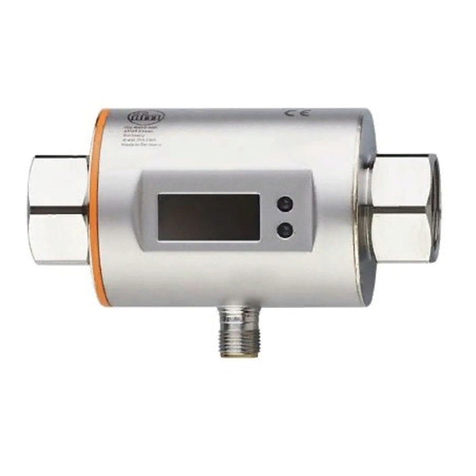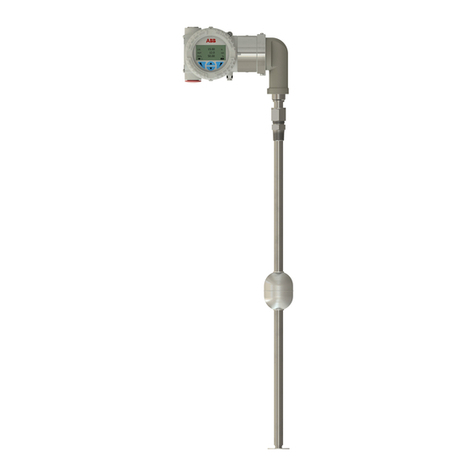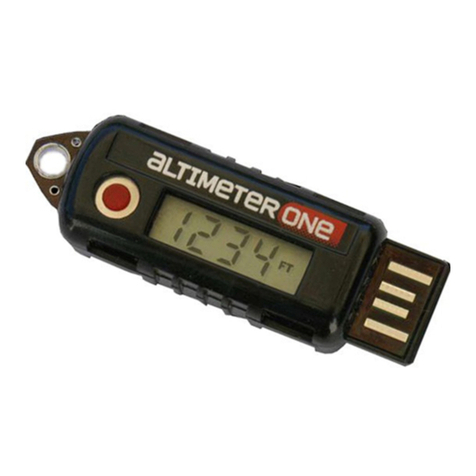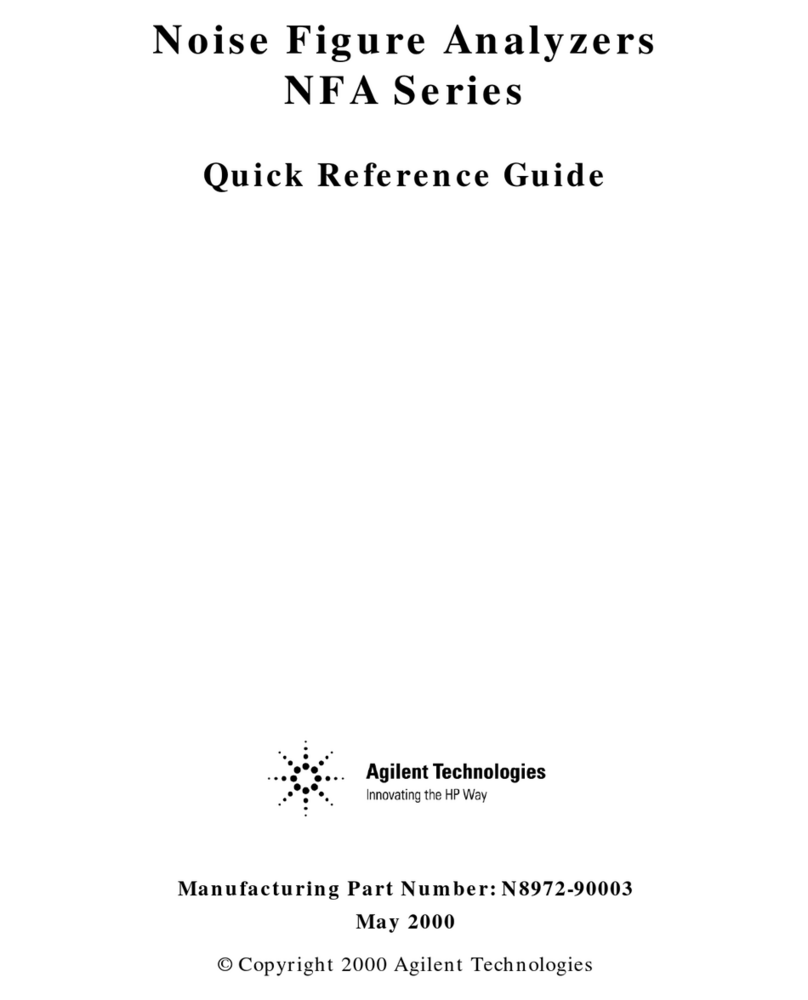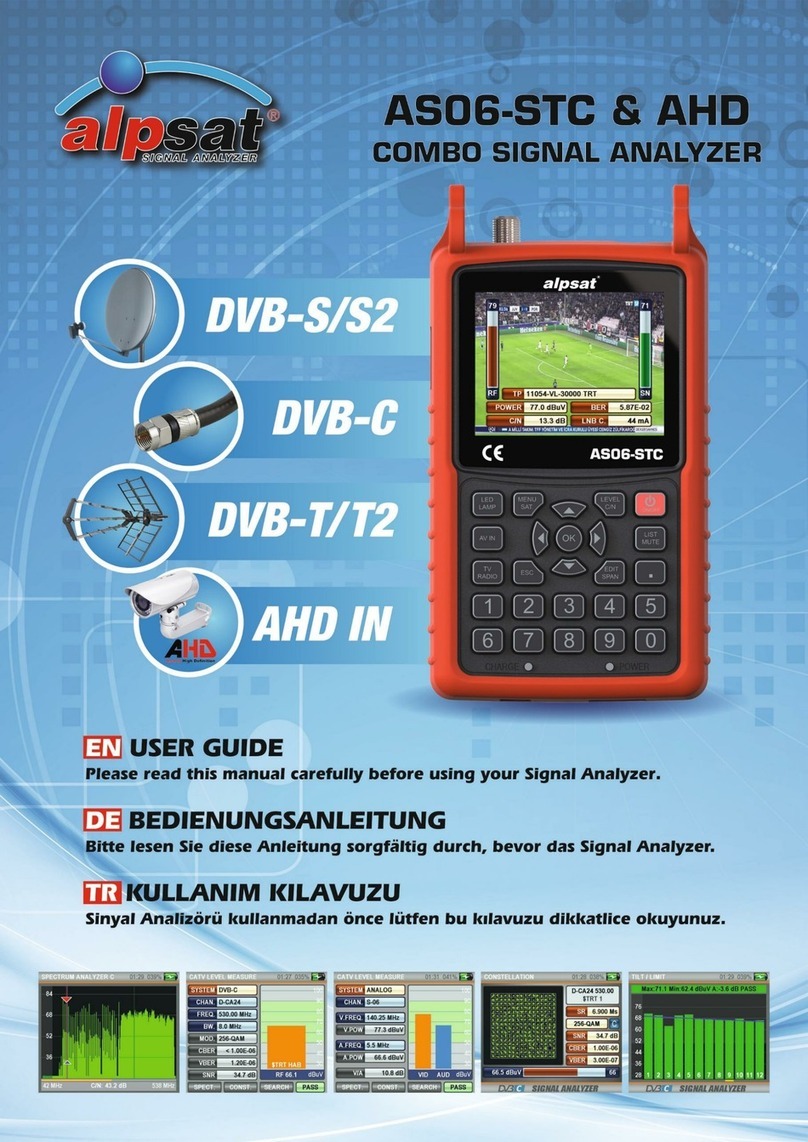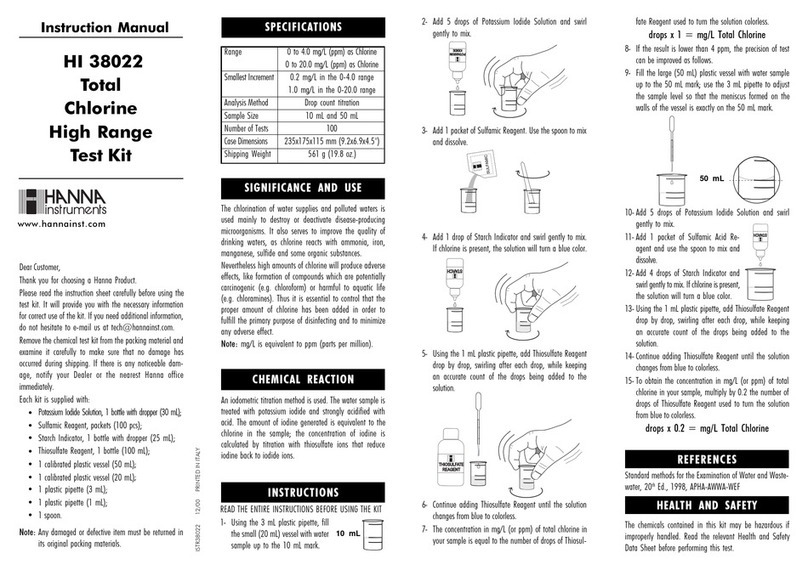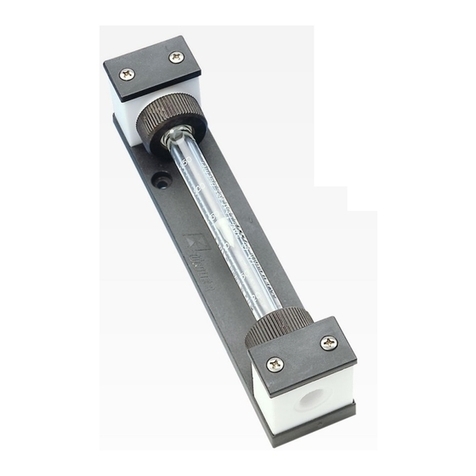Thermocable ProH2O User guide

Document 520/001 Rev 2.2 Dec 2013 Page 1 of 10
Web: www.waterleakdetection.com Email: info@thermocable.com
Tel: +44 (0)1274 882359 Fax: +44 (0)1274 882229
ProH2O Water Leak Detection Application Guide
IMPORTANT GUIDELINES
The ProH2O Water Leak Detection Systems are ideally suited for early warning of water leaks in a wide variety
of applications. Planning and correct placement of the ProH2O sensor cable will maximize the effectiveness of
the system to detect water leaks and trigger an alarm. Before starting the installation identify all areas where a
water leak is likely to occur and make a note of these areas in order to plan placement of the cable.
In all applications of water leak detection it should be noted that the ProH2O sensor cable
MUST come into contact with sufficient amount of water in order to trigger an alarm. Therefore
before installing the sensor cable check either visually or by experiment to ensure water will
flow to where you intend to lay the cable.
• Ensure the product is installed, commissioned and maintained by persons according to good
engineering practices and authorities having jurisdiction.
• It is important at all times to keep the detection cable clean and free from dust, debris and other
contaminants that may soil the cable, especially during installation.
• Ensure any major construction work has been completed and signed off before installing the detection cable
• Periodically inspect the detection cable. The cable should be clean and free of dust or other contamination.
The inspection interval should be no greater than 12 months.
• Ensure the detection cable is thoroughly dried out after a leak has occurred.
• A selfadhesive or screwtype Uclip should be used to secure the detection cable to the mounting surface
without lifting it or creating an air gap between the surface and cable.
• Do not cut and reterminate the detection cable.
The connections have been factory fitted and are unservicable.
• Do not paint the detection cable.
• Do not put the detection cable under excessive tension.
Maintain some slack in the detection cable when laying it out on surfaces.
• Do not bend the detection cable less than the minimum bend radius of 25mm (1")
• Avoid laying the detection cable in areas where heavy taffic may result in damage.
• Do not solder or weld around the detection cable. Flux or other conductive contaminants will prevent the
detection cable from operating correctly.
• Do not crush the detection cable.

Document 520/001 Rev 2.2 Dec 2013 Page 2 of 10
Web: www.waterleakdetection.com Email: info@thermocable.com
Tel: +44 (0)1274 882359 Fax: +44 (0)1274 882229
ProH2O Water Leak Detection Application Guide
Typical Applications for Water Leak Detection
• Data Centres/Computer rooms
Detect leaks underneath raised flooring
• Fire Sprinkler systems
Ensure the integrity of pipework/tanks
• Vacant property
Prevent leaks from causing extensive damage in property which may not be visited for several days
or weeks.
• Air conditioning systems (HVAC)
Early warning of leaks from HVAC pipes, drip pans and other fittings.
• High value property e.g. Historical/Period buildings, libraries, museums
Detect water leaks where a small amount of water may cause very high value damage.
• Commercial/Office Buildings
Detect leaks near plumbing which may cause damage to the floors below.
• Multioccupancy Buildings
Prevent water leaks causing widespread damage
• Roofs & Basements
Early warning of leaks which may go unnoticed
• Water cooled equipment
Detection of leaks which may cause costly downtime
Other Applications
• Areas of the world where water is scarce
Preventing excess loss of water which is considered a valuable commodity

Document 520/001 Rev 2.2 Dec 2013 Page 3 of 10
Web: www.waterleakdetection.com Email: info@thermocable.com
Tel: +44 (0)1274 882359 Fax: +44 (0)1274 882229
ProH2O Water Leak Detection Application Guide
SENSOR CABLE OVERVIEW
ProH2O Sensor Cable is a linear sensor for
the detection of water leaks. When water
comes into contact with the detection cable a
controller can detect changes in the electrical
characteristics of the cable and signal an
alarm or other action. The sensor cable is
available in preterminated lengths for simple
assembley and extension. Nonsensing pre
terminated lengths are also available when
the cable is to pass through areas which do
not require protection.
Technical Data
Overall Diameter: 6.05mm (0.238in)
Approvals: CE Marked, RoHS Compliant
Ambient Temperature Range: 20˚C to +70˚C (4˚F to +158˚F)
Construction: 4core twisted sensor cable
with insulating polymer braid
Standard Lengths: 3.75m (12ft)
7.5m (25ft)
15m (50ft)
30m (100ft)
50m (164ft)
100m (328ft)
Custom lengths on request

Document 520/001 Rev 2.2 Dec 2013 Page 4 of 10
Web: www.waterleakdetection.com Email: info@thermocable.com
Tel: +44 (0)1274 882359 Fax: +44 (0)1274 882229
ProH2O Water Leak Detection Application Guide
SENSOR CABLE INSTALLATION
Area Protection Standard application
ProH2O sensor cable is ideally suited to detecting leaks over a wide area such as underneath a raised floor or
similar applications. The sensor cable should be laid around the perimeter of the room and then spaced equally
across the remaining floor space as shown below. The required cable length can be approximately calculated
using the following formula:
Floor area (m2) + 10 ≈ Minimum Cable Length (m)
Figure 1 shows the layout of ProH2O Sensor Cable when protecting an area of approximately 10m2. Here the
sensor cable has first been laid around the perimeter of the room, no more than 0.5m away from the walls. The
sensor cable is then laid in the middle of the room at a 0.5m spacing between runs. Using standard ProH2O
sensor cable lengths, a 15m and 3.75m cable provide the required coverage. Depending upon the risk increase
the coverage by reducing the spacing between cable runs and installing additional lengths of detection cable.
Figure 1. ProH2O Sensor Cable layout for Area Protection

Document 520/001 Rev 2.2 Dec 2013 Page 5 of 10
Web: www.waterleakdetection.com Email: info@thermocable.com
Tel: +44 (0)1274 882359 Fax: +44 (0)1274 882229
ProH2O Water Leak Detection Application Guide
SENSOR CABLE INSTALLATION
Leak detection around pipes
ProH2O detection cable can be used to provide early warning of leaks from pipework, valves and similar
equipment. It is important to maintain the surface contact between the pipe and detection cable. A
maximum spacing of 150mm (6") is recommended between cable ties when the detection cable is
attached to a pipe. Adding lagging around the pipe over the detection cable further improves the chance of
detecting a leak. The effectiveness of the detection cable when attached underneath a pipe is dependant on
many variables however the most important differerence between leak detection on a pipe and laying the cable
on a surface is that a continuous flow of water must be present on the pipe to trigger an alarm.
Figure 2. ProH2O Sensor Cable used to protecting piping

Document 520/001 Rev 2.2 Dec 2013 Page 6 of 10
Web: www.waterleakdetection.com Email: info@thermocable.com
Tel: +44 (0)1274 882359 Fax: +44 (0)1274 882229
ProH2O Water Leak Detection Application Guide
SENSOR CABLE INSTALLATION
Water Tanks Protection
ProH2O Sensor cable can be used to protect water tanks in a roof space where there is a possibility of leaks
going unnoticed for extended periods. Typical examples include header tanks or expansion tanks in the loft of a
house or in the roof space of an office building. ProH2O sensor cable should be laid around the tank no more
than 15cm (6") away from the tank. It is good practice to lay excess cable (in a sine wave pattern) around areas
which have a higher risk of leaking, such as pipe entrances/exits to the tank.
Figure 3. ProH2O Sensor Cable used to protect tanks

Document 520/001 Rev 2.2 Dec 2013 Page 7 of 10
Web: www.waterleakdetection.com Email: info@thermocable.com
Tel: +44 (0)1274 882359 Fax: +44 (0)1274 882229
ProH2O Water Leak Detection Application Guide
SENSOR CABLE INSTALLATION
Air Conditioning (or HVAC) Units (Indoor use)
ProH2O Sensor cable can be laid around air conditioning units and the associated drip trays to provide an early
warning of a malfunction or damage to the connecting equipment. It is important to ensure the sensor cable will
remain dry during normal operation of the air condition unit. Regular maintenance and servicing is required to
verify the sensor cable is clean and to confirm the system is functioning correctly.
Figure 4. ProH2O Sensor Cable used to monitor air conditioning equipment

Document 520/001 Rev 2.2 Dec 2013 Page 8 of 10
Web: www.waterleakdetection.com Email: info@thermocable.com
Tel: +44 (0)1274 882359 Fax: +44 (0)1274 882229
ProH2O Water Leak Detection Application Guide
SENSOR CABLE INSTALLATION
Securing the sensor cable
It is important to correctly secure the ProH2O detection cable in order to maximize the possibility of water
coming into contact with the water sensitive cores within the cable. Figure 5 below shows the recommended
mounting clips used to secure the sensor cable. The clips shown hold the cable to the floor without any material
between the floor and the cable. Any clip which lifts the cable off the floor will reduce the effectiveness of the
sensor cable. The clips also allow some sideways movement which aids servicing and maintenance.
It is important not to crush the cable when securing it to a surface or a pipe with a clip or cable tie.
Figure 5. ProH2O Sensor Cable recommended mounting clips

Document 520/001 Rev 2.2 Dec 2013 Page 9 of 10
Web: www.waterleakdetection.com Email: info@thermocable.com
Tel: +44 (0)1274 882359 Fax: +44 (0)1274 882229
ProH2O Water Leak Detection Application Guide
Frequently Asked Questions
1. What is the best way to secure the detection cable to a surface?
The leak detection cable should be firmly attached using selfadhesive Uclips or similar. These can be screwed
through to the floor to ensure the clip does not become loose. When using the detection cable on the floor it is
preferable to keep the detection cable in contact with the surface as much as possible. Any gaps between the
surface and the cable decreases the response time and increases the required amount of water needed to
trigger an alarm.
2. What is the best way to secure the detection cable to a pipe?
If the detection cable is run alongside a pipe it should be placed underneath the pipe and cable ties placed at a
maximum spacing of 150mm (6"). Ensure the surface contact between the pipe and detection cable is
maintained as much as possible along the cable length. Lagging further aids the ability of the cable to detect a
leak. Refer to page 4 for examples.
3. How can I check the integrity of the cable?
Each ProH2O System continuously monitors the cable for a fault anywhere along its length and emits a trouble
signal if a fault occurs. However the cable may be checked using a multimeter. Measuring the resistance
between the two outermost connectors at either end of the detection cable without an endofline plug attached
should read greater than 20Mohms. Dipping the cable in water should result in the resistance decreasing to less
than 5Mohms.
4. Can ProH2O leak detection cable be laid on metal surfaces?
Yes, the ProH2O detection cable is designed to maintain a gap between any metallic or conductive surface and
the sensor cores within the detection cable. Ensure no conductive parts can protrude through the braid and
touch a sensor core.
5. What is the best way to clean the detection cable?
The detection cable can be cleaned with a damp cloth or by washing the cable in water. Once cleaned the cable
will need to be dried before the ProH2O system can be used. Do not use solvent based cleaners on the cable.
6. How often should I check the detection cable?
The detection cable should be examined and tested at regular intervals and no greater than 12 months apart. At
each inspection the function of the cable should be check (see question 3 above) and clean if necessary.

Document 520/001 Rev 2.2 Dec 2013 Page 10 of 10
Web: www.waterleakdetection.com Email: info@thermocable.com
Tel: +44 (0)1274 882359 Fax: +44 (0)1274 882229
ProH2O Water Leak Detection Application Guide
Frequently Asked Questions
7. How much water is required to trigger an alarm?
The amount of water required to trigger an alarm varies depending on which ProH2O controller the sensor cable
is connected to. Please refer to the ProH2O Module documentation (Document No. 550/001) or ProH2O
Professional documentation (Document 500/001) for more information. It is worth noting that the ProH2O
system has the ability to detect very small amounts of water or even a saturated environment (R.H. >98%)
however this would increase the frequency of alarms for situations which pose no serious problem. The
sensitivity of all ProH2O controllers have been set to provide an optimum level of protection against leaks which
are a signficant problem and have the potential to cause major damage.
Table of contents
Popular Measuring Instrument manuals by other brands
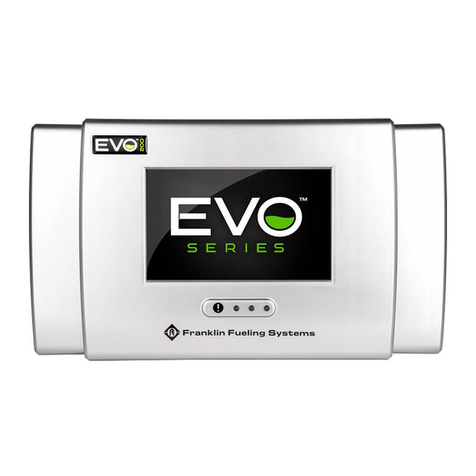
Franklin Fueling Systems
Franklin Fueling Systems EVO 200 Programming guide

Panasonic
Panasonic K-NL316G quick start guide
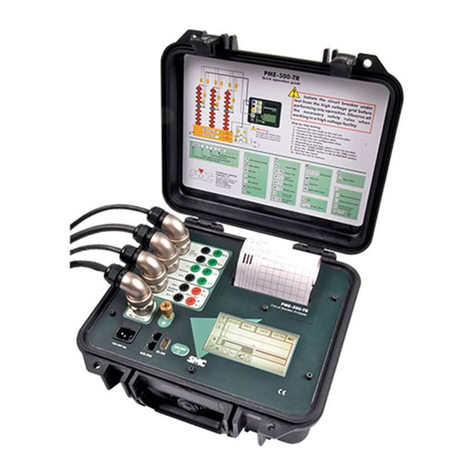
SMC Networks
SMC Networks PME-500-TR quick start guide

PROSPORT
PROSPORT EVO SERIES installation instructions
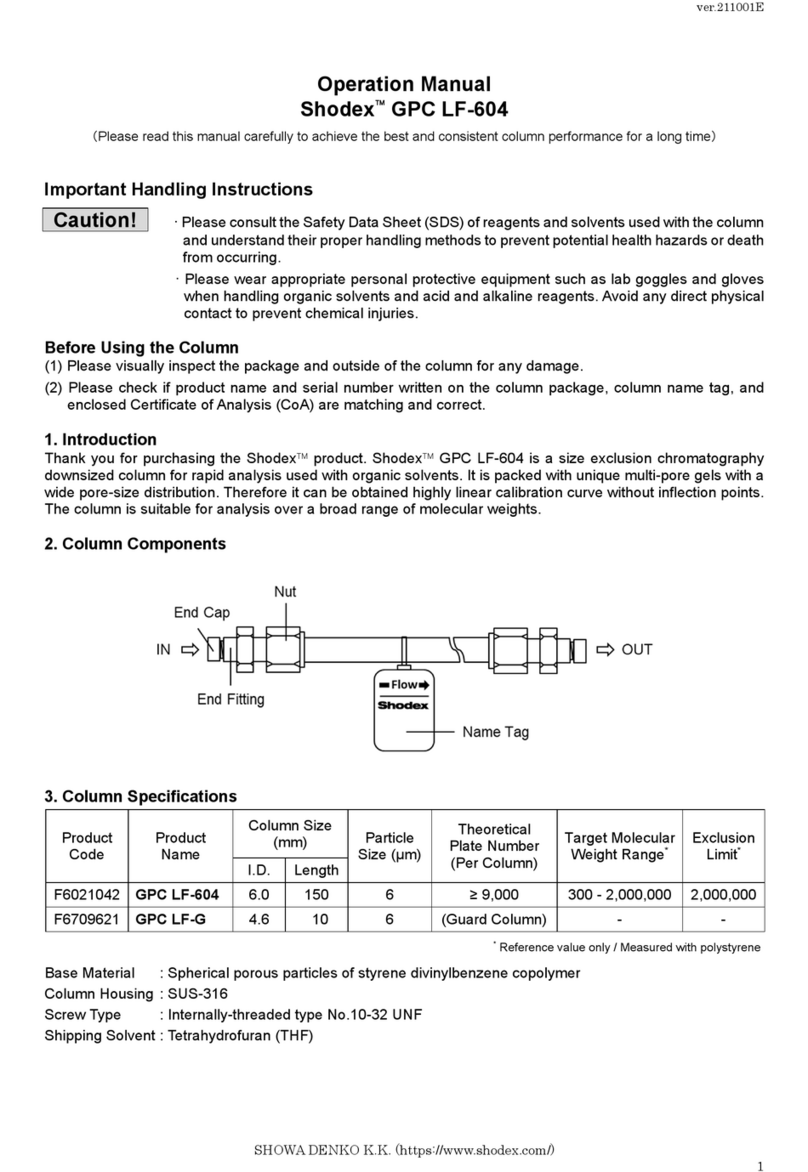
Shodex
Shodex GPC LF-604 Operation manual
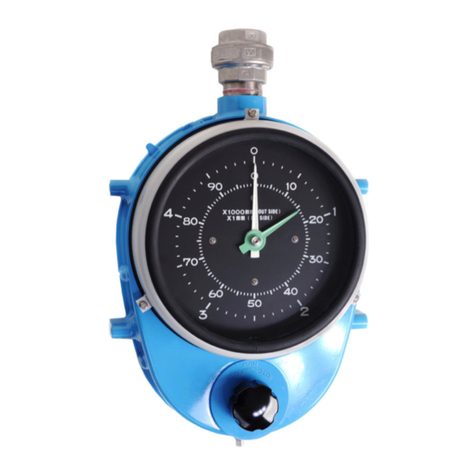
Endress+Hauser
Endress+Hauser LT5 operating instructions

